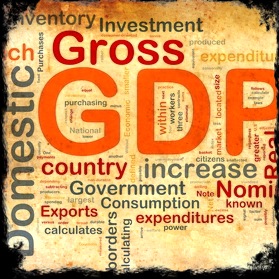GDP and Fertility Exploration marks
GDP and Fertility
Mark 13/20
 This Project highlights some of the key differences between criterion G: Notation and Terminology, compared to criterion B: Mathematical communication, for the Exploration.
This Project highlights some of the key differences between criterion G: Notation and Terminology, compared to criterion B: Mathematical communication, for the Exploration.
B - Mathematical communication: Consideration of the appropriate degree of accuracy including the use of the “approximately equal to” notation: ≈ is taken into consideration when awarding marks for this criterion (as mentioned in the TSM material, but not directly in the criteria or notes). Examples of common errors are:
(i) predictions using a greater degree of accuracy than the measures provided/data provided.
(ii) no use of the ‘approximately equal to’ notation for results/predictions obtained using a ‘model’ e.g. a function that models (and therefore ‘estimates’) a set of data, shape of a building etc.
View the project GDP and Total Fertillity Rate
The marks explained
Number | gci_423 | Project | What is the relationship between a country’s GDP and Total Fertility rate? |
Background information should include: Which syllabus items/units had been covered in class prior to the students writing their explorations? What access to technology and mathematics/science software do the students have? Other comments can be included, if the teacher thinks they will be helpful for the moderator. As stated in the guide’s internal assessment section, criterion C: “assesses the extent to which the student engages with the topic by exploring the mathematics and making it their own. It is not a measure of effort”. | |||
Criterion | Name | Mark | Justification |
A | Presentation (4) | 3 | The aim is clearly set out in the introduction and provides the focus for the work that follows in the body of the exploration. It is referred to in the conclusion. The link between each section: boxplots to scatter graphs to Chi² test are made clear. The work is well-organised and coherent. It was only necessary to include a sample of the data from p.4-5 (rather than all of it), and the boxplot African and European summary statistics (p.8-9) would have been better presented in the same table for easier comparison. The work is not concise. |
B | Mathematical Communication (4) | 2 | Unnecessary and inappropriate y-axes and scale on the box and whisker diagrams. No use of “approximately equal to” notation nor consideration of what might be an “appropriate degree of accuracy” (TSM ‘Skills and Strategies’ section in the ‘internal assessment’ chapter) for the summary statistics presented on p.8-9 (particularly the quartiles), nor for the least square’s regression line of best fit and correlation coefficients (p.10). “Some” rather than “mostly” is a ‘best fit’ description of this exploration. |
C | Personal Engagement (3) | 2 | The student’s personal engagement is in evidence by relevant references in the introduction and a coherent use of varied and pertinent statistical techniques in the body of the work. They have “explored the topic from different perspectives” (boxplots, scatter graphs and regression etc and Chi² test) and “made and tested their predictions/hypothesis” (see the criteria additional notes) in a way that “helps the reader to better understand the writer’s intentions”. |
D | Reflection (3) | 2 | The reflections on the line graphs, bar chart, pie chart, box and whisker diagrams and X² test are best described as a “simple description of results”. |
E SL | Use of Mathematics (6) | 5 | The mathematics explored is correct. Good knowledge and understanding are in evidence for the X² test, whereas ‘some’ knowledge and understanding may be a better descriptor of the use of a single regression line for GDP and TFR (p.10) when there seem to be two different patterns: one for the data above a TFR of 2 and another for that below two, the interpretation of the boxplot summary statistics on p.9 lacks precision and focus. Overall ‘mostly correct’ and a ‘good’ understanding and knowledge’ are the better fit descriptors (than ‘partially’ correct and ‘some’ K&U). |
E HL | Use of Mathematics (6) | 2 | No knowledge commensurate with the HL part of the course is used. The comments in the SL section above remain relevant for the knowledge that has been applied. |
